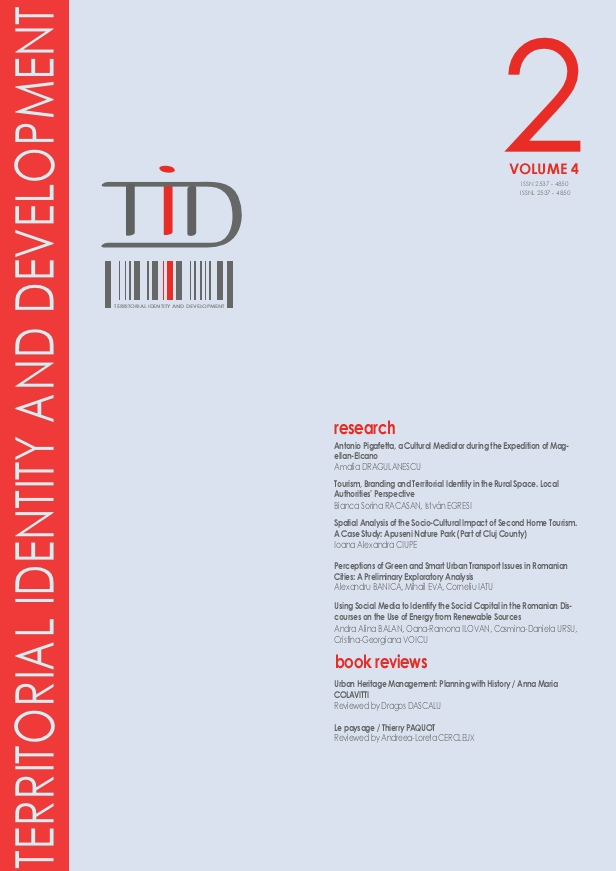Tourism, Branding and Territorial Identity in the Rural Space.
Tourism, Branding and Territorial Identity in the Rural Space.
Author(s): Bianca Sorina Răcăşan, István-Oliver EgresiSubject(s): Geography, Regional studies, Human Geography
Published by: Universitatea Babeş-Bolyai
Keywords: economic diversification; territorial development;brand elements;destination;mountain area;Cluj;
Summary/Abstract: While diversification as an economic strategy could be the solution to territorial development, concepts such as specialisation, individualisation and uniqueness should always be kept in mind in the branding process of any destination. The purpose of this study was to identify to what extent did local authorities understand these principles and what sort of brand elements they considered to be suitable for the administrated commune, in the context of a certain territorial identity that tourism could take advantage of. In order to demonstrate credibility with this topic,theoretical perspective upon the brand image of the 26 investigated communes was provided to illustrate both the tourism potential of the territory and the valuable contribution that local authorities can make to brand development. In order to obtain the discussed information, quantitative and qualitative methods were employed: from observation and synthesis engaged in the literature and official websites review, to semi-structured interviews with 26 representatives of the local authorities (of each commune in the examined area) that were later analysed and expressed through descriptive, statistical, graphical and tabular data. Although the results show that local authorities are aware of tourism’s importance to economic development, their choice of brand elements is rather questionable especially when considering territorial identity. However, some of the local authorities we interviewed did have a good understanding of the local elements that could be employed in territorial branding. They had not only correctly recognized nature-based aspects and cultural heritage attractions including customs and traditions, but had also expanded the cognitive perspective that outsiders tend to have with respect to an unfamiliar destination, by completing it with affective features that tourists equally appreciate.
Journal: Territorial Identity and Development
- Issue Year: 4/2019
- Issue No: 2
- Page Range: 18-38
- Page Count: 21
- Language: English

